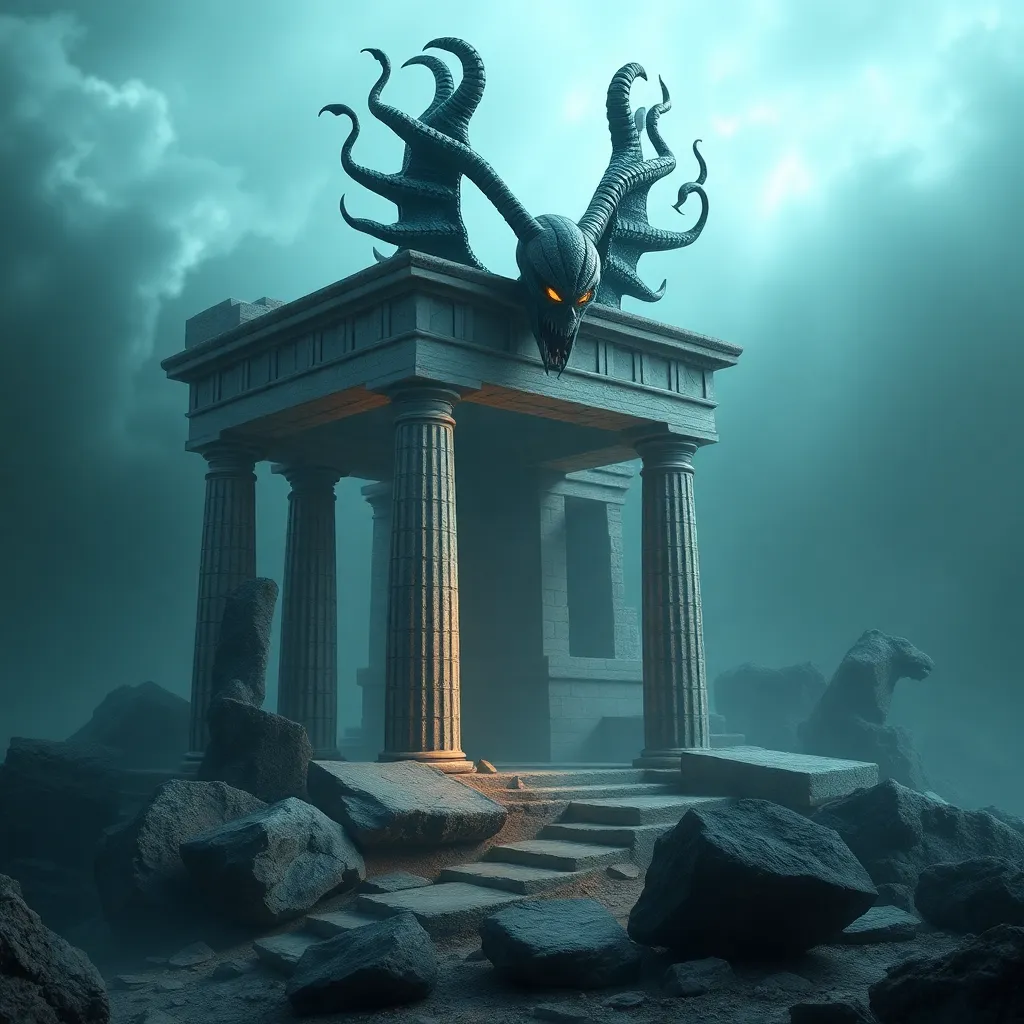The Underworld’s Role in the Development of Greek Mythological Narratives
I. Introduction
The Underworld, known as Hades in Greek mythology, represents the realm of the dead and serves as a critical component of ancient Greek beliefs. It is not merely a destination for souls after death but a complex structure that embodies the Greek understanding of mortality, morality, and the afterlife.
This article explores the Underworld’s significance within Greek mythological narratives, examining its historical context, thematic elements, and influence on heroic tales. Through this exploration, we aim to understand how the Underworld has shaped Greek mythology and its enduring legacy in literature and culture.
II. Historical Context of the Underworld
The concept of the Underworld has evolved significantly throughout ancient Greek culture, reflecting changes in societal beliefs and values. Initially, the Underworld was seen as a shadowy existence, devoid of joy or hope. Over time, it developed into a more structured realm, with various levels and specific figures governing its operations.
Key literary sources that illuminate the Underworld’s role include:
- Homer’s “Odyssey”: This epic poem features Odysseus’s journey to the Underworld, where he encounters the spirits of the dead, learning valuable lessons about life.
- Hesiod’s “Theogony”: This work provides insights into the genealogies of gods and mortals, highlighting the Underworld’s place in the cosmic order.
Additionally, pre-Hellenic beliefs suggest that the Underworld was conceived as a dark and formless void, gradually evolving into the more organized vision seen in later Greek thought.
III. The Structure of the Underworld
The Underworld is often described as a vast and intricate realm, divided into various sections that reflect the souls’ moral standings. Key features include:
- The Fields of Asphodel: A neutral zone where the souls of ordinary people reside, neither punished nor rewarded.
- Tartarus: A deep abyss used as a dungeon of torment for the wicked and a place of punishment.
- Elysium: A paradise reserved for heroes and the virtuous, where they enjoy eternal bliss.
Key figures associated with the Underworld include:
- Hades: The god of the Underworld, ruling over the dead and maintaining order.
- Persephone: The queen of the Underworld, representing the cycle of life and death through her annual descent and ascent.
- Charon: The ferryman who transports souls across the River Styx, ensuring they reach their final resting place.
- The Furies: Deities of vengeance who punish those who commit grave sins.
The Underworld also features a concept of judgment, where souls are assessed for their actions in life, determining their fate in the afterlife.
IV. Thematic Elements of the Underworld in Myths
The Underworld is rich with thematic elements that reflect human experiences and moral lessons:
- Death and the Afterlife: Many myths emphasize the inevitability of death and the importance of living a virtuous life to secure a favorable afterlife.
- Transformation and Rebirth: The cyclical nature of life and death is a prevalent theme, highlighting the potential for renewal and change.
- Revelation and Enlightenment: Encounters in the Underworld often lead to profound insights, shaping the characters’ understanding of their lives and destinies.
V. Influence on Heroic Narratives
The Underworld serves as a critical trial for many heroes in Greek mythology:
- Heracles: One of his twelve labors involved retrieving the three-headed dog Cerberus from the Underworld, symbolizing the confrontation with death.
- Odysseus: In his journey, he seeks guidance from the prophet Tiresias, emphasizing the importance of knowledge gained from the dead.
These encounters with deceased figures profoundly impact the heroes’ journeys, providing them with wisdom and shaping their identities. The Underworld is a place where heroes confront their fears and understand their mortal limitations.
VI. Symbolism and Metaphor
The Underworld serves as a powerful symbol in Greek mythology, representing:
- Human Fears and Desires: It embodies the fear of death and the unknown, as well as the desire for immortality and understanding.
- Allegorical Storytelling: Many myths use the Underworld to convey moral lessons and the consequences of one’s actions.
- Psychological Interpretations: The Underworld can be seen as a manifestation of the subconscious, where unresolved conflicts and fears reside.
VII. The Underworld in Later Greek Literature and Art
The portrayal of the Underworld has continued to evolve in classical tragedies and comedies, influencing various artistic expressions:
- Tragedies</: Plays such as Aeschylus's "The Oresteia" explore themes of justice and vengeance in the context of the Underworld.
- Comedies: In works like Aristophanes’s “Frogs,” the Underworld is depicted humorously, showcasing the duality of life and death.
Artistic depictions of the Underworld have also evolved, from dark and foreboding landscapes to more nuanced representations of its inhabitants. Its influence extends into later Western literature and culture, inspiring countless works from Dante’s “Inferno” to modern interpretations of the afterlife.
VIII. Conclusion
The Underworld holds a significant place in Greek mythology, serving as a complex realm that reflects human experiences and moral lessons. Its structural and thematic elements have shaped narrative structures and character developments in many myths.
As we continue to explore these ancient tales, the Underworld remains relevant, offering insights into our understanding of life, death, and the human condition. The myths surrounding the Underworld invite us to ponder our own fears, desires, and the legacy we leave behind.




